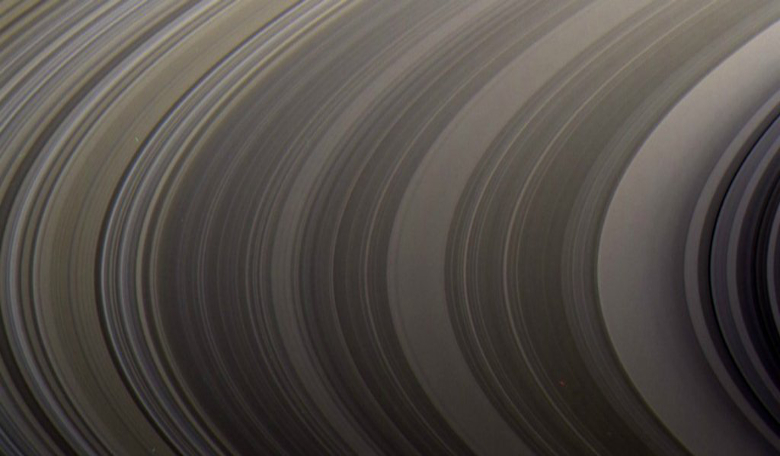The vast, majestic rings of Saturn are one of the most captivating and exquisite features of the Solar System, but unfortunately these ice-strewn bands that make this planet so distinguishable are in trouble, as scientists have discovered that they are disappearing at an alarming rate.
Saturn is not the only planet in our Solar System to have rings; Jupiter, Uranus and Neptune each have rings too. But at 282,000 kilometres (175,000 miles) across and scattered with over 50 moons, Saturn’s are by far the most spectacular – however this might not be the case for too long.
Using data collected by the two Voyager probes decades ago, two researchers have found that Saturn’s enormous gravity is shredding the ring material into particles of ice, which is then being pulled into the planet along magnetic field lines, to be devoured by the gas giant at the maximum rate possible.
"We estimate that this 'ring rain' drains the equivalent of an Olympic-sized swimming pool from Saturn's rings in half an hour,” said Dr O'Donoghue, who works at NASA's Goddard Space Flight Center in Greenbelt, Maryland. This alarming depletion of the ring material means the entire beautiful banded system will be gone in 300 million years said O'Donoghue.
This figure is somewhat on the optimistic side though as Dr O'Donoghue believes that the rings could even disappear quicker than this. "Add to this the Cassini-spacecraft detected ring-material falling into Saturn's equator, and the rings have less than 100 million years to live."
Compared with the lifespan of a human, this might seem like a long time, but Saturn’s rings are estimated to only be around 100 millions years old anyway. Considering that Saturn has been around for the same amount of time as Earth – around 4 billion years – this is something of a conundrum.
Dr Tom Stallard, an Associate Professor at the University of Leicester, UK and the co-author of the study said: "The young age of the rings has some really startling implications. It is possible, in the age of the dinosaurs, that Saturn's rings were even larger and brighter than we see them today.
"Something dramatic must have happened around Saturn to make them this large, long after the planet itself formed."
The possibility that electrically-charged ice particles from Saturn’s rings were flowing down invisible magnetic field lines, and dumping water into the gas giant’s upper atmosphere, is not a new one.
Three dark narrow bands encircling the planet were spotted by Voyager 2 as it studied the gas giant in 1981. The bands were something of a conundrum, then five years later, Jack Connerney of NASA Goddard linked the bands to the shape of Saturn's magnetic field.
Connnerney reasoned that ‘ring rain’ was following the path of unseen magnetic field lines down into Saturn’s upper atmosphere and washing away sections of the stratospheric haze to produce the distinctive darker stripes seen so clearly in the Voyager images; a theory that looks to have been proven right.











